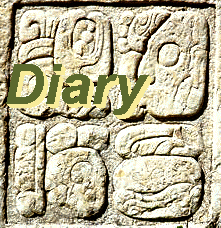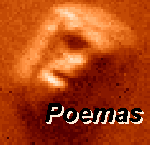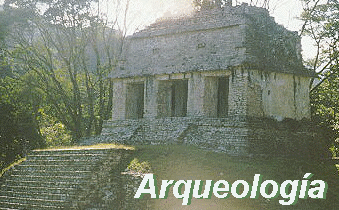Ensenada, Baja California
This pearl of the Mexican frontier spreads its wings before the sun and sometime fog upon the shores of the Bahia de Todos Santos, at 116'40 W 31'50 N. |
Tijuana Gringo : Andar tras mesoaméricaCountryside & Metropolis : Baja California |
Diary |
Poemas |
Archeology |
Ensenada, Baja California
This pearl of the Mexican frontier spreads its wings before the sun and sometime fog upon the shores of the Bahia de Todos Santos, at 116'40 W 31'50 N.
"Ensenada" is a word that merely means "little bay," but "little" hardly applies to its size -- the beautiful half-moon curve stretches 20 kilometers from north to south, with the center of town seated on its northeast shoulder. Perhaps the "little" means that it's not much of a sheltered bay, being largely open to the Pacific Ocean in its western stretch toward China. Nowadays, however, rock breakwaters have been constructed before downtown, creating a small all-weather harbor in the corner of the huge, open bay.
Ensenada has had a colorful, if short, history -- at least, what history we know about. For thousands of years people lived here about whom we know only a little. As a location with wild plants, game animals, half-dry streams and seashore resources, it was settled long ago by Indians -- who in recent centuries were members of the Kumeyaay (or Kumiai) nation, the Ipai (or Paipai) tribes that reached from San Diego County to here, cousins of the Yuman people on the Colorado River beyond the mountains. Anthropologists say that linguistic evidence indicates these peoples may have migrated from Arizona after the droughts of the 12th and 13th century which decimated (1/10th?) the "pueblo" cultures, and that furthermore, when they reached this coast, they may have displaced other tribes south into the peninsula before them. Their descendants still live in the hills and valleys on both sides of the international border. Some of their art may be found for sale at one or two galleries in the more recent city of Ensenada.
Spanish exploring expeditions captained by Cabrillo and Vizcaino stopped here in the 16th and 17th centuries, and "Ensenada de Todos Santos" appears on the oldest European maps -- even those showing California to be an island. This bay was also popular with pirates and whaling ships. Occasionally the Manila Galleon stopped to take on water -- always with one or two eyes over their shoulder watching out for those pirates.
Junipero Serra passed this way on land with the 1769 Franciscan expedition to colonize upper California for Spain. Shortly thereafter, the Dominicans, charged with founding missions in northern Baja California, decided not to locate one here, choosing sites to the north and south where they believed the surface streams were more dependable.
The Ruiz family settled in these wide valleys by the sea around 1805, developing their Rancho Ensenada along the usual livestock lines. The Gastellum family took over around 1825. Gastellum and Ruiz are now the names of two important downtown streets. (One of the Gastellum descendants, Juan, is a contemporary Tijuana sculptor noted for his Quijotes.)
In 1869, gold was discovered at Real de Castillo, some 30 kilometers inland. As the nearest port and source of meat, Ensenada boomed overnight with the influx of hungry miners. The old town was born with a heady mix of Mexicans and foreigners -- mostly yankees. Hammers and nails pounded day and night. Steampships regularly sailed from San Francisco, Los Angeles and San Diego. There was even talk of a railroad. Ensenada became the capital of the territory.
The beginnings of the fishing industry can also be traced to this period, including Chinese boats expelled from the United States (some things don't change much, eh?). Later discoveries of gold at El Alamo promised to renew the frenzy, but the great California land boom collapsed in the U.S. in 1886, and then the mines here ran dry and closed down. However, the fabled Hussong's Cantina on Ruiz Avenue still opened in 1892, in the twilight of Ensenada's first boom.
Following the Revolution (and the pseudo-Magonista mercenary troubles), the territorial capital was changed to the new city of Mexicali in the desert beyond the mountains. Ensenada slumbered until the United States embraced prohibition in 1919, and then the new industry of drinking tourism stretched down from Tijuana. The beautiful casino, built in 1930, still stands as a cultural center -- Riviera del Pacifico. You can find it by the waterfront south of the usually dry river. Gambling was outlawed in 1938, but Ensenada has by then made its mark as a touristic alternative to Tijuana.
Along with tourism, the commercial fishing fleet, the port, and other industry continued to develop and the city grew steadily through the later half of the 20th century. Today Ensenada has a population of several hundred thousand residents -- considerably smaller and calmer than Tijuana with its 2 million -- yet has a rocking reputation as a party town for Mexicans and for U.S. visitors. Foreigners need no special visa to stay up to 72 hours in this "border city." To travel further south (beyond La Bufadora) requires a tourist visa -- get it at the border when you cross if you think you'll want to taste more of Baja California.
A hundred kilometers south of Tijuana, Ensenada can be approached via the spectacular scenic tollway that clings to the rugged cliffs of the coast. Busses for the 1-1/2 hour trip depart from a station convieniently near the border gate at Tijuana, just beyond the island of tacos and sea of taxis.
Downtown Ensenada at times appears to be one huge party zone. Hotels and restaurants abound and there are shops of every caliber. Mardi gras carneval in February is famous. The old seafood market will either amaze or disgust you, depending on your attitude toward fish heads and guts. The new bayfront walk -- el malecon -- is a magnificent public work, and excellent place to take a leisurely stroll ("paseo") while you gaze across the busy inner harbor. Whalewatching and sportsfishing boats depart from here, visiting yachts both scruffy and bristol tie up at the marinas, cargo and fishing fleets rumble in the background, and cruise ships occasionally moor at their own, special wharf.
Our favorite restaurant, Mariscos Ensenada, is located on Riveroll, a little over a block from the center entrance to the plaza of three giant heads. For your convenience, their huge menu is printed in English and Spanish. Moderate but not outrageous, they haven't paid us anything yet, but maybe when they read these words we'll get a free meal off them, eh? Tell them the Tijuana Gringo sent you... hee hee. We're hungry.
One of the more famous sites nearby Ensenada is La Bufadora, a natural blow hole where incoming waves send big spouts of water up through a crack in the coastal cliffs. Included in the "border zone," it is one of the last places you can visit headed south without a tourist visa. It's twenty something kilometers south of town. Take the main highway and turn right at Maneadoro or the sign saying "La Bufadora." Drive out the paved road onto scenic Punta Banda. Paid parking. Restaurants. Do not climb on the dangerous rocks. Stay on the walkways or die, washed from the cliffs with your body smashed and mangled by the waves against jagged stone with teeth that rip flesh....
Eh. Ensenada is indeed one of the brightest pearls on the necklace of Baja California. Enjoy your visit and pardon my writing madness!
Towns & People | Culture & Nature | Countryside & Metropolis | Ancient, Modern & Colonial Places | Valley and Mountain |
Andar tras mesoamérica : |
Diary |
Poemas |
Archeology |

|

|

|

| Tijuana Gringo |